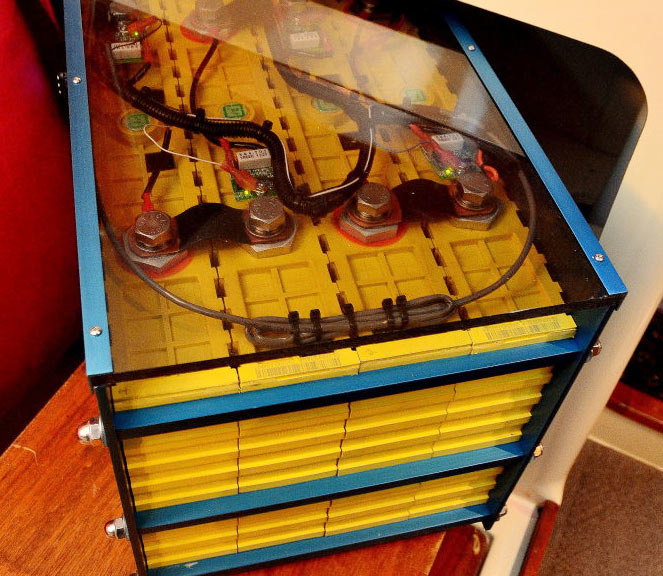Gonna try and keep this direct and to the point.
Background info:
5p4s prismatic pack built from 200Ah cells, initially balanced at 3.55VPC using a PL-8.
With use, the second bank (i call them A, B, C, D) started to show high voltage in spite of only charging with 14.0V. So Im rebalancing. Im doing it manually with a 10A bench power supply because the PL-8 died and Im sick of hobby chargers. For each bank i set the PS voltage to 3.65 (verify with multimeter), and taper to 2A. For bank B, resting voltage was over 3.5V so i discharged it to 3.3 with a resistor and then did the same charge-with-taper that I used for A, C, and D.
Resting voltage on all the banks is now ~3.45V for A, C, and D. But bank B is back up to 3.53V. Ive discharged it again and am going to recharge it at 500 mA with the PS and manually stop it when it reaches 3.45V (at least I think thats how it will work). I will then make a few more passes around each bank to get voltages as close as I can before calling it balanced.
The question(s):
What is it about bank B that Im overlooking? I realize at least one of the 5 cells in that bank is underperforming and thus limiting my whole packs capacity. Im okay with that, but I dont understand why it is overcharging compared to the other banks when subjected to the same charge routine? Do I need to consider that one cell could actually be bad and not just weak?
- Jerud
------------------------------------------------------------
1220W array / 1000Ah LFP house bank
MidniteSolar Classic, Magnum MS2812
ME-RC, Trimetric, and JLD404
Yep, made some bad decisions but learned my lesson and now making the best of it
Full-time 100% electric boondocking (no propane, no genny) since 2015
2001 Fleetwood Prowler 5th wheel 25 foot, self-rebuilt
Background info:
5p4s prismatic pack built from 200Ah cells, initially balanced at 3.55VPC using a PL-8.
With use, the second bank (i call them A, B, C, D) started to show high voltage in spite of only charging with 14.0V. So Im rebalancing. Im doing it manually with a 10A bench power supply because the PL-8 died and Im sick of hobby chargers. For each bank i set the PS voltage to 3.65 (verify with multimeter), and taper to 2A. For bank B, resting voltage was over 3.5V so i discharged it to 3.3 with a resistor and then did the same charge-with-taper that I used for A, C, and D.
Resting voltage on all the banks is now ~3.45V for A, C, and D. But bank B is back up to 3.53V. Ive discharged it again and am going to recharge it at 500 mA with the PS and manually stop it when it reaches 3.45V (at least I think thats how it will work). I will then make a few more passes around each bank to get voltages as close as I can before calling it balanced.
The question(s):
What is it about bank B that Im overlooking? I realize at least one of the 5 cells in that bank is underperforming and thus limiting my whole packs capacity. Im okay with that, but I dont understand why it is overcharging compared to the other banks when subjected to the same charge routine? Do I need to consider that one cell could actually be bad and not just weak?
- Jerud
------------------------------------------------------------
1220W array / 1000Ah LFP house bank
MidniteSolar Classic, Magnum MS2812
ME-RC, Trimetric, and JLD404
Yep, made some bad decisions but learned my lesson and now making the best of it
Full-time 100% electric boondocking (no propane, no genny) since 2015
2001 Fleetwood Prowler 5th wheel 25 foot, self-rebuilt



Comment